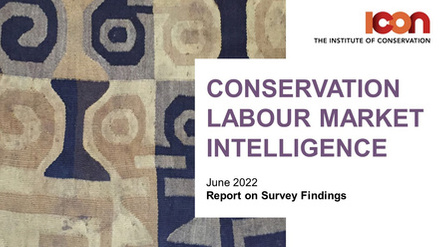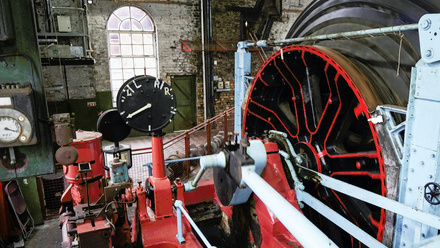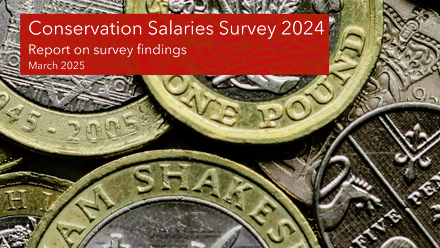The Institute of Conservation undertook Labour Market Intelligence research to understand the shape and extent of the conservation sector in 2022. This work has been based on the Heritage Labour Market Intelligence Toolkit developed by Icon alongside the Chartered Institute for Archaeologists and Historic England.
This report will be used to inform our workforce-related policy work and to ensure that we can provide effective advocacy and support for conservation and heritage science.
Summary snapshot of the conservation workforce
- 41% of respondents worked either as business owners or represented private practice conservation businesses employing more than 1 person. A further 27% of respondents worked as freelancers. The remaining 32% of respondents represented various types of public or charity sector organisations.
- 73% of organisations who responded employed less than 9 employees within their conservation teams, including 45% who only employed one conservation professional.
- 53% of workers were employed on a full-time basis regardless of the type of contract they worked under. 29% were reported to be working part time roles, including 2% who employed individuals under zero hours contracts.
- Staff turnover within the conservation workforce was identified as being relatively low, with 68% reporting less than 5% turnover in their workforce over the previous 12 months. It was also seen as unlikely that any significant changes in the overall number of roles in the coming 12 months. It is important to note that this survey was undertaken during the Covid-19 pandemic which may have impacted these findings.
- 32% of respondents indicated that recruitment had been challenging, with the majority citing a low overall number of applications received as well as a low number meeting the requirements for the jobs which had been advertised.
Educational attainment and professional accreditation
It was clear that the conservation workforce is highly educated, with 88% of organisations reporting that their conservation workforce was qualified to bachelor’s degree level or above, with 56% holding a master’s level qualification.
78% of respondents indicated that they required or desired that their members be either Pathway or Accredited members of Icon, which included 69% who required or desired that their conservation workforce were Accredited members of Icon.
Skill requirements
The most in-demand aspect of conservation practice was Collections Care / Preventive Conservation followed by Interventive practice and then Conservation Management.
The materials specific skills and knowledge which were consistently rated as being in high demand included: works of art on paper, archives / library materials, paper, books and photographic materials. This was broadly true for all aspects of conservation practice.
However, we note that low levels of skills demand among respondents in not an indicator as to the relative importance of those skills - it is likely to be more nuanced depending on the aspect of conservation practice and the material knowledge and understanding required to perform the job role.
- It may be that a low number of practitioners is required to service the volume of conservation work in that part of the sector.
- Work may be required to stimulate the development of skills in order to effectively meet the needs of conservation work in that part of the sector.
- There may be a need to stimulate the demand for conservation skills and knowledge among employers and commissioners of conservation services
For example, a specialist area such as engineering conservation may display all of these indicators, with a low number of individuals currently practicing, but a recognised need to increase that number and a corresponding need to increase the use of appropriately qualified individuals to carry out engineering conservation work.
There are also areas of practice that do not fall within the scope of the work carried out by many employers in this survey – architectural conservation is good example of this. It is clear that there is a large number of built heritage assets and a corresponding high number of practitioners, but this data has not been captured in this research.
It is evident that further focused research is required to investigate the specific skills needs within these parts of the conservation profession.
There is a clear demand for communication, project management and digital skills amongst the conservation workforce. This is likely to be reflective of the changing nature of the role of professional conservators in adapting to technology, the changing nature of the commissioning of conservation work and more externally focused job roles.
Salaries and benefits
The median salary levels identified through this survey were broadly similar to those identified through Icon’s ‘Conservation Salaries Survey 2022’. This survey showed that the median conservator earnt between £25,000 and £29,999 / year – this is compared to a median of £30,500 and mean of £31,800 identified through the separate salaries survey.
International workforce
30% of organisations were reported to employ non-UK passport holders within their workforce. This was not seen as being something that was likely to change over the coming 12 months. The majority, 74%, highlighted that they had not experienced any issues in recruitment However, for the 15% of respondents who had experienced challenges almost all could be put down to stricter immigration rules post-Brexit which had proven challenging to negotiate for those concerned.







